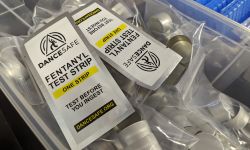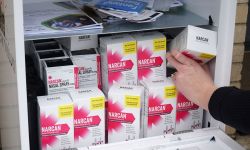How is your Michigan community spending opioid settlement money? Look it up

- Bridge is providing a look-up tool for Michigan residents to view how opioid settlement funds are being used
- That spending varies widely between communities, and has focused on prevention, treatment and recovery
- The state doesn’t collect spending information from counties, townships and cities
Michigan counties, townships and cities are splitting about $745 million in opioid settlement funds over 18 years, with communities harder hit by the crisis receiving more money per capita.
How communities are spending — or not spending — that money varies widely, according to information collected by Bridge Michigan.
Because the state doesn’t collect data on local spending, Bridge reached out to Michigan’s 83 counties and the 50 cities and townships expected to get at least $500,000 over 18 years of settlement payments. Through multiple contacts and public records requests, Bridge received at least partial answers from about 90% (119) of those communities chronicling how they are handling the funds that are meant to curb a crisis that kills a Michigander every four hours.
Related:
- Michigan communities sit on $90M meant to help drug users, Bridge finds
- Amid drug crisis, one Michigan city is using money to help backfill budget
- How does Michigan use its opioid dollars? Here’s how Bridge found out
- Read Bridge's exhaustive coverage this year about opioids abuse and spending
Bridge found that more than 4 in 10 hadn’t spent any of their funds as of June 1 and that, overall, less than 30% of funds have been spent or, at minimum, budgeted to be spent.
Communities that have begun to use the funds have overwhelmingly spent money on traditional prevention, treatment and recovery programs.
Some have beefed up drug courts or expanded drug treatment programs inside jails. Many have sent checks to local nonprofit addiction services.
You can look up your community here. You can see the communities that didn’t provide Bridge with information, as well as those that provided spending details down to the penny.
Get help
For help with opioid abuse, call the SAMSHA National Hotline, a 24-hour, 365-day-a-year, treatment referral hotline. 1-800-662-HELP (4357)
See what new members are saying about why they donated to Bridge Michigan:
- “In order for this information to be accurate and unbiased it must be underwritten by its readers, not by special interests.” - Larry S.
- “Not many other media sources report on the topics Bridge does.” - Susan B.
- “Your journalism is outstanding and rare these days.” - Mark S.
If you want to ensure the future of nonpartisan, nonprofit Michigan journalism, please become a member today. You, too, will be asked why you donated and maybe we'll feature your quote next time!








